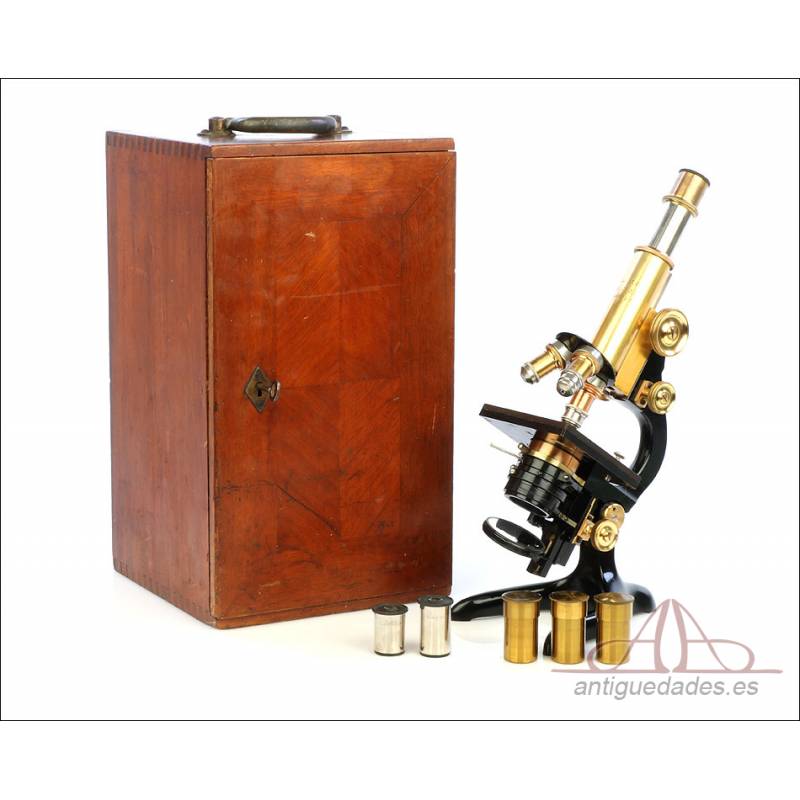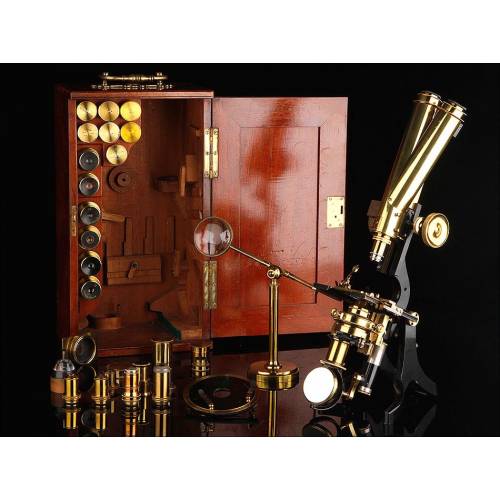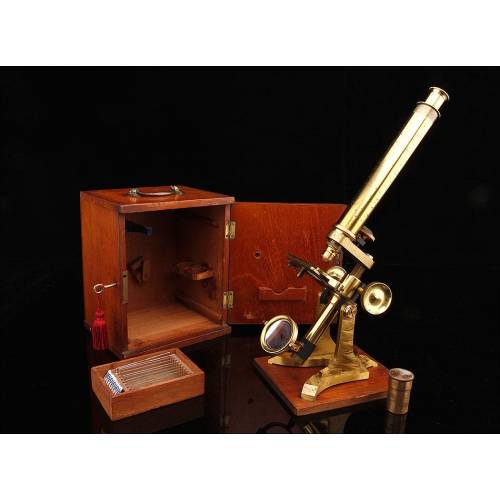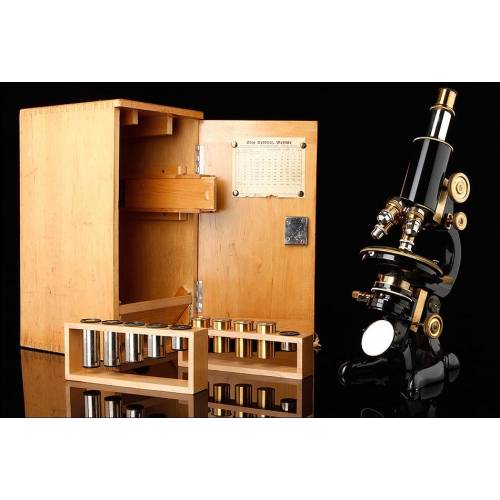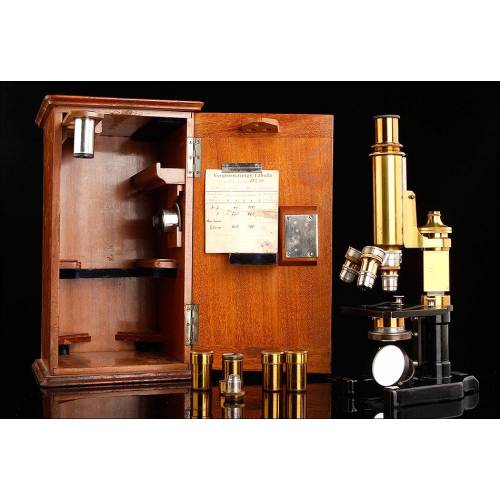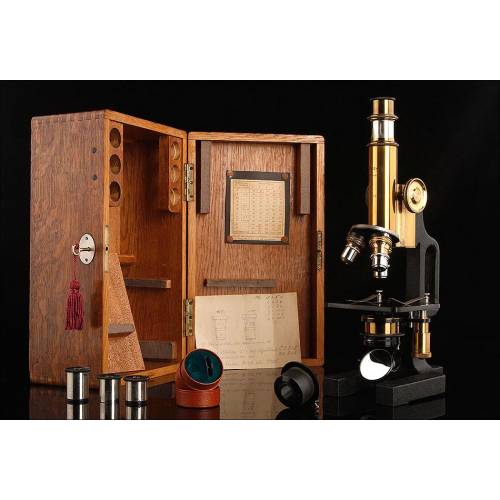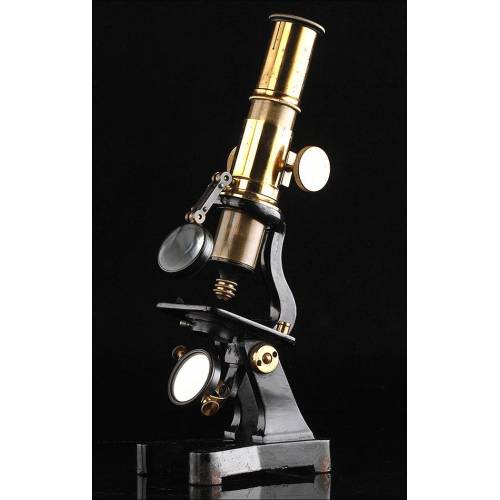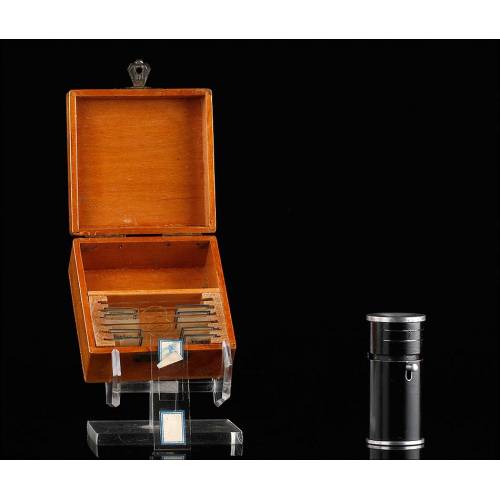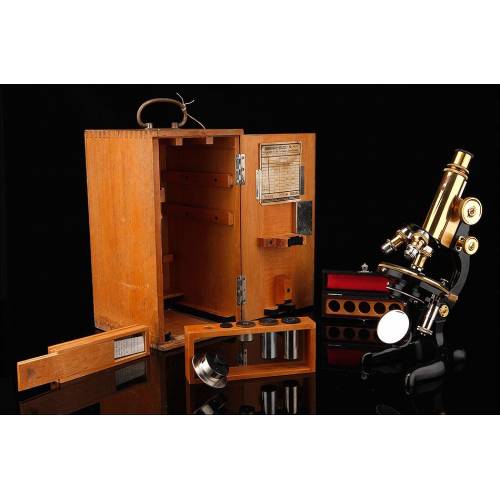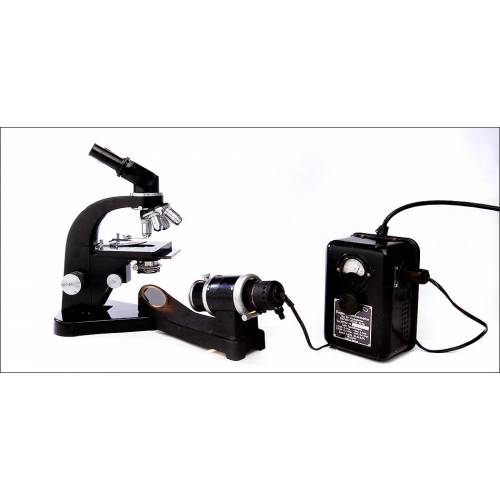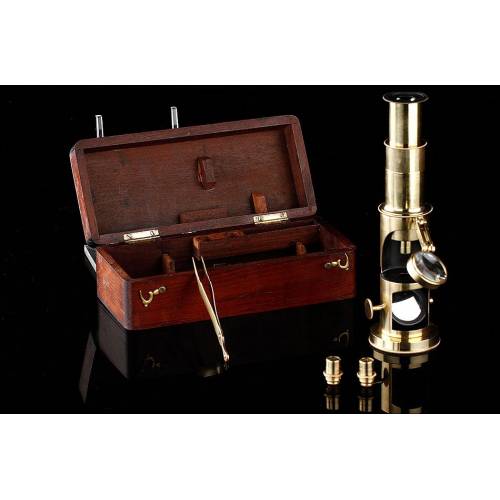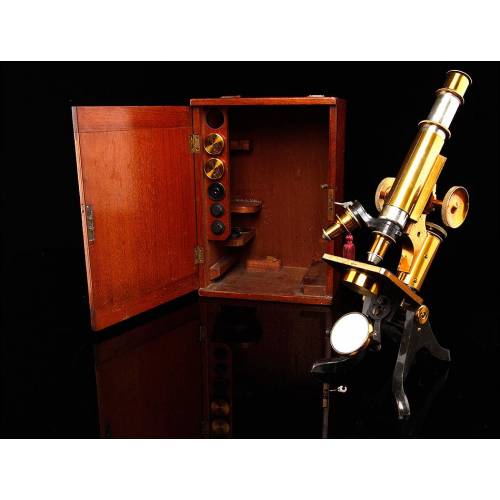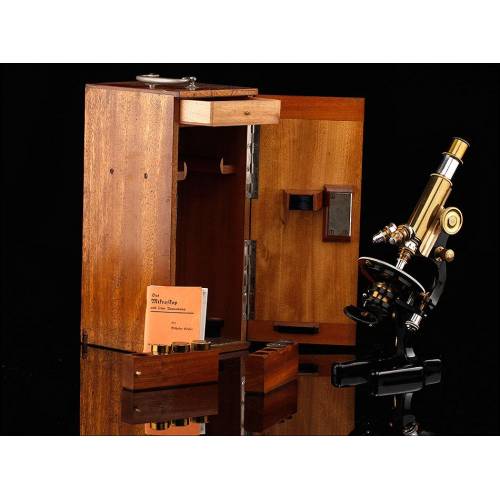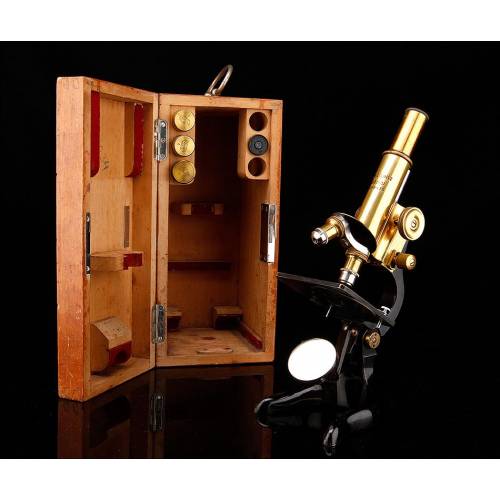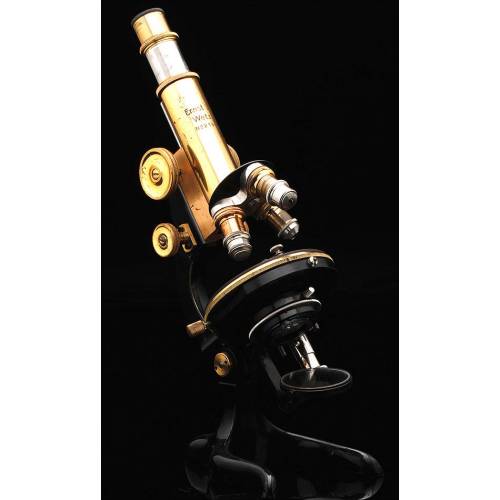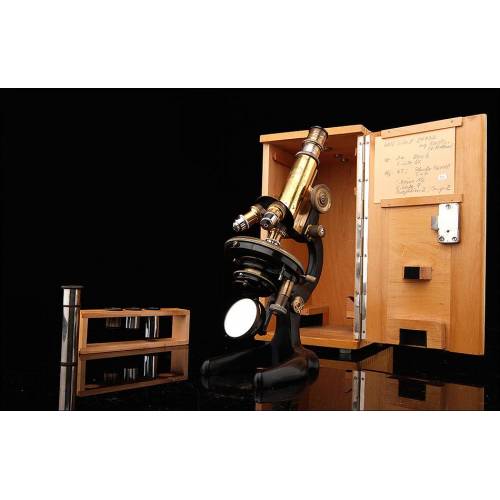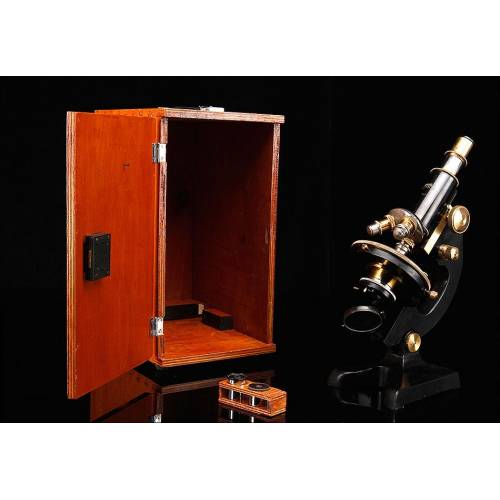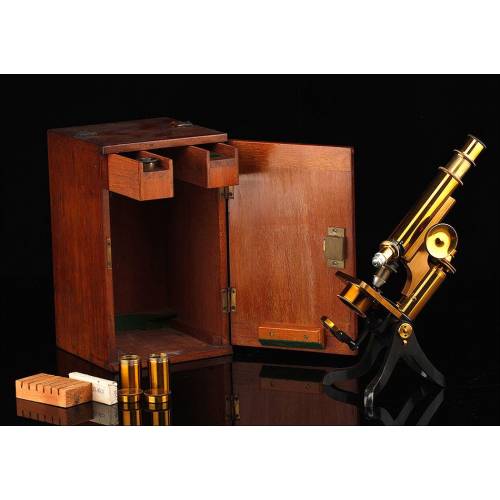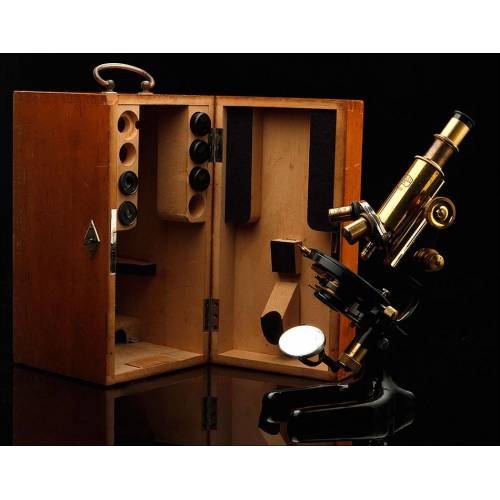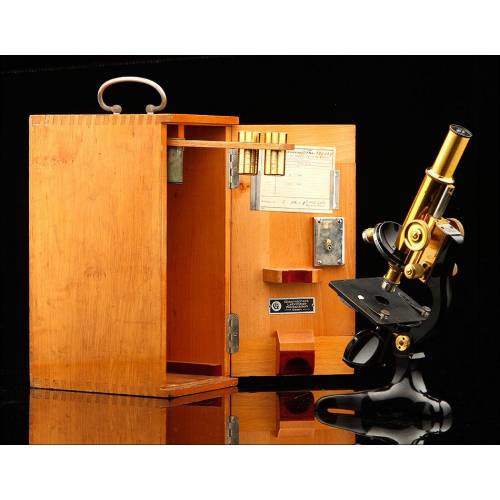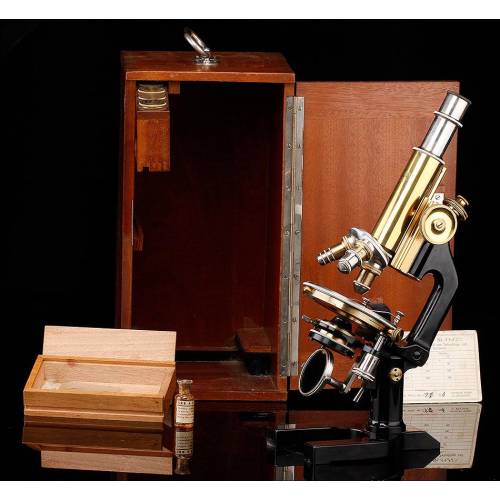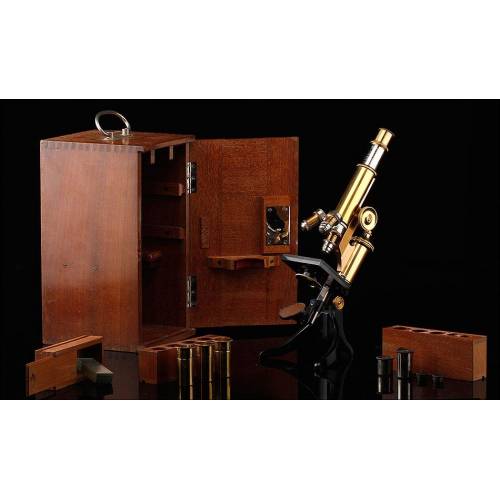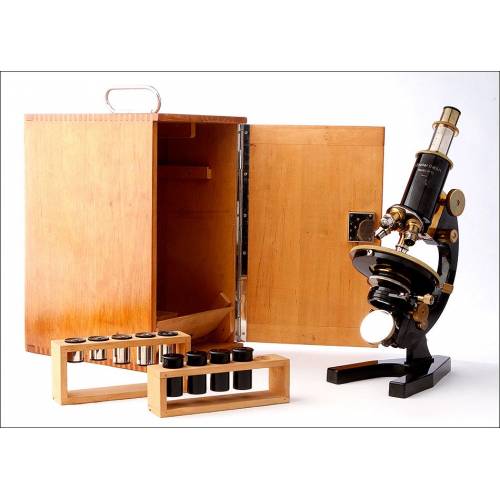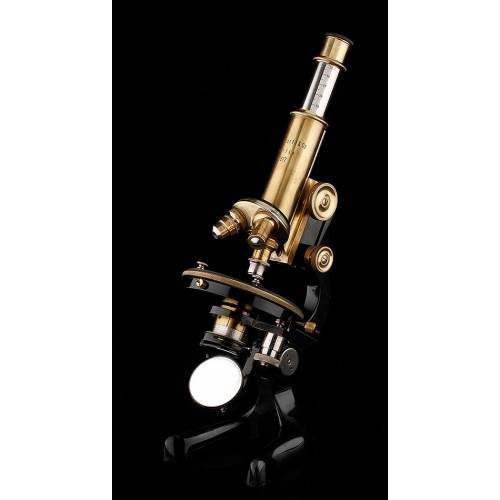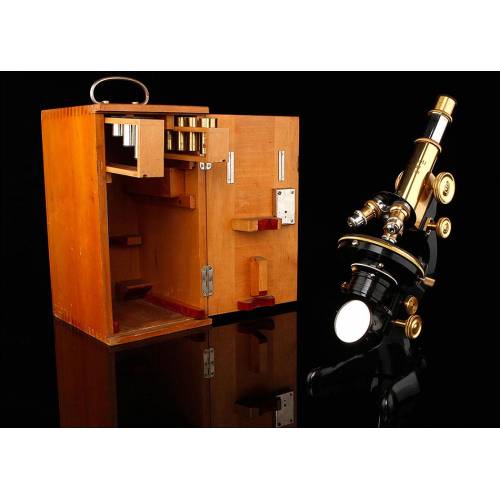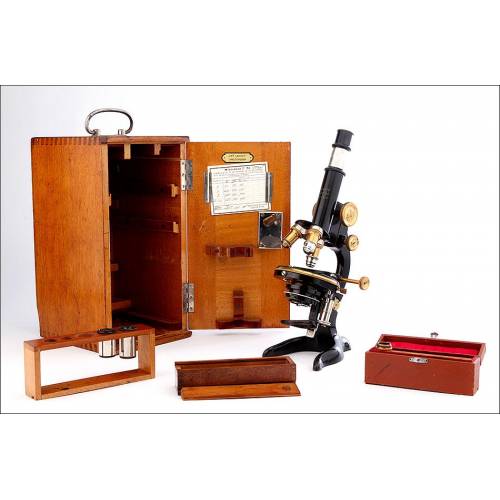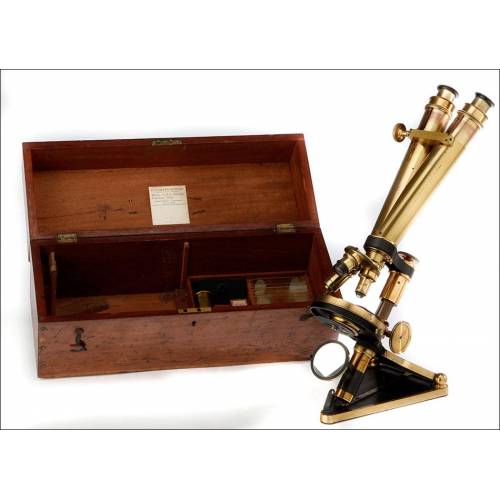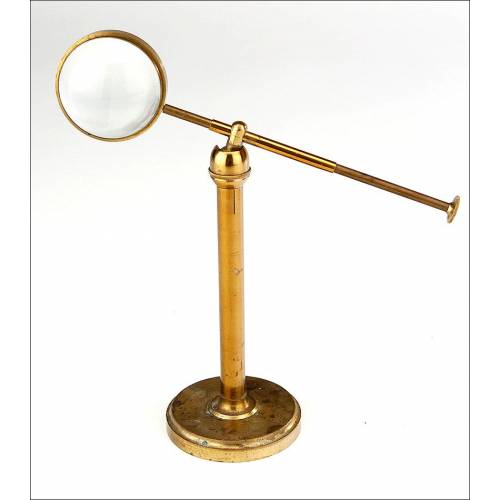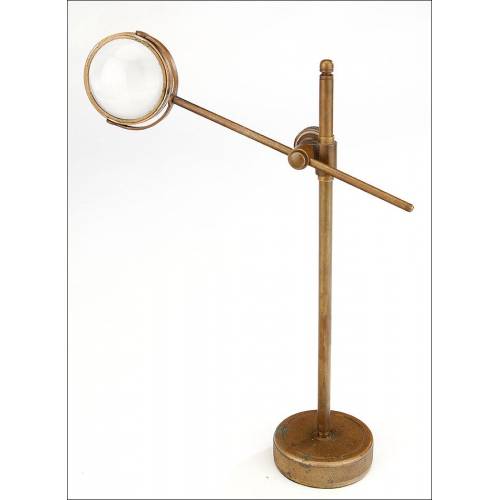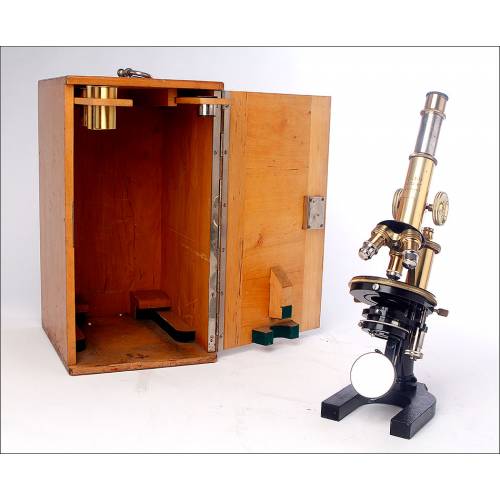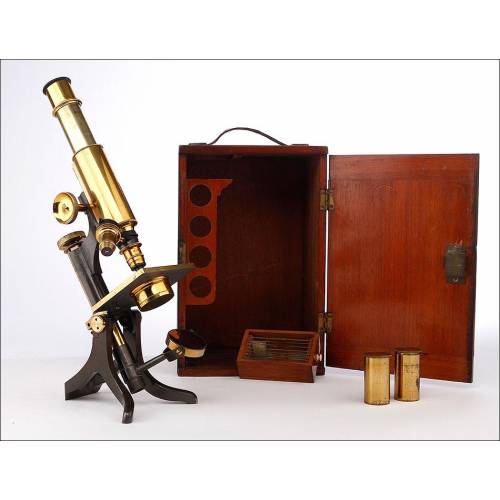D-180
Antique E. Leitz Wetzlar Microscope. Extraordinary. Germany, 1911
Fascinating E. Leitz Wetzlar microscope made in the early 2th century. Entirely original and in amazing condition. In working order.
Sold!
Extraordinary antique E. Leitz Wetzlar microscope, made in Germany in 1911 and in superb condition. The microscope is in working order and preserves all its original component parts and accessories. It comes in its solid-mahogany wooden piece, a gorgeous handmade woodwork piece with the original lock and key in working order. It comes with a set of three eyepieces and three objectives (3, 6 and oil immersion), all of them with the manufacturers mark. The microscope mounts a double-side mirror (concave and flat) and two shutters. This item is composed of a sturdy black-lacquered metal body with horseshoe foot, and a series of brass and silvery-metal component parts mounted on top of the body. The brass pieces remain in great condition and preserve the original transparent lacquered finish. The brass turret bears the engraved company name and the serial number Nº 140037, which makes it possible to tell the year of manufacture. The rest of the screws, mobile parts and gears, including the rack-and-pinion system, are also finely preserved and show off a fluid and soft operation that turns the use of this microscope into a real pleasure for its owner. This extraordinary antique E. Leitz Wetzlar microscope will surely shine in a good collection of scientific antiques for its quality, good condition and great performance. Dimensions: Width: 6.3 in / 16 cm. Height: 1.3 in / 34 cm.Ernst Leitz Wetzlar History The beginnings of the famous optic material manufacturing company named Ernst Leitz Wetzlar can be found in the first half of the 19th century, when the mechanic and selft-taught mathematician Carl Kellner founded the Carl Kellner Optisches Institut in Wetlzar, Germany. After his early death his widow maintained the business, and in 1864 the mechanical engineer Ernst Leitz entered the company. Just five years later, Leitz took control of the firm and changed its name for Ernst Leitz Wetzlar. Leitz led the company to success after introducing improvements such as serial production, raising sales volume rapidly after 1871. Leitz microscopes included technical improvements that increased their quality; by the late 19th century the company already had a worldwide reputation. Ernst Leitz died in 1920 and the leadership of the firm passed to his son. As well as for their microscopes and optic material, Leitz became hugely famous for their famous Leica cameras (abbreviation of Leitz Camera).

